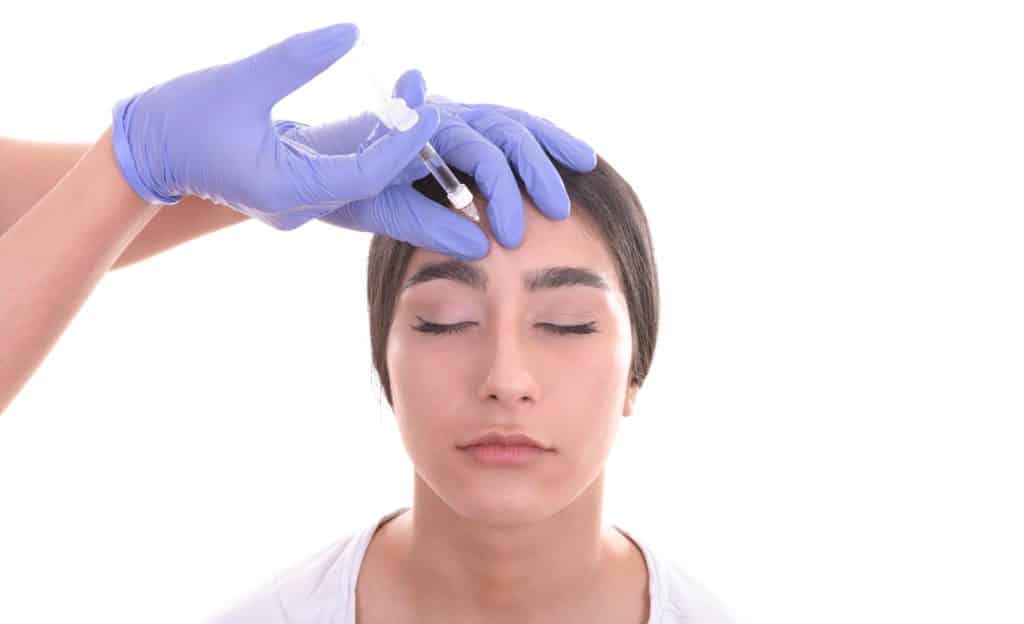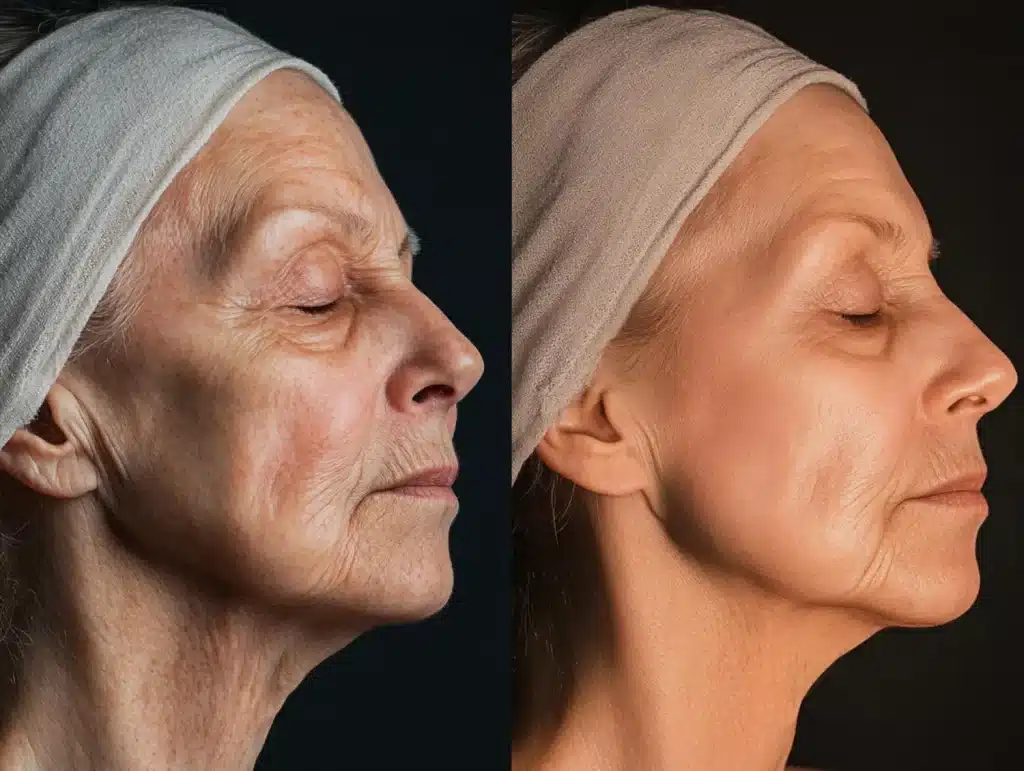Did you know that nearly 52% of the global population suffers from an active headache disorder? A recent study published in The Journal of Headache and Pain highlights this startling statistic. Among those suffering from this disorder, two specific types are prevalent: migraines and tension-type headaches. Both can be incredibly disruptive, causing significant pain and impacting daily life.
Fortunately, there are new options for managing these conditions. Dysport is a botulinum toxin type A formulation primarily used for cosmetic enhancements. However, more and more healthcare professionals are applying Dysport treatment for chronic migraine management.
This article will delve into Dysport’s use in treating headaches and its efficacy as a minimally invasive solution for headache relief.
Key Takeaways
- Dysport, commonly known for its aesthetic applications, such as reducing wrinkles, has therapeutic uses in managing headaches.
- It effectively treats tension-type headaches and migraines through its mechanism of action in reducing muscle contractions and pain.
- Clinical evidence and case studies support the use of Dysport for headache management, providing medical professionals with a valuable treatment option.
About: Medical Spa RX provides medical practices with premium products at the best prices. If you’re looking to buy Dysport wholesale for your practice, the sales representatives at Medical Spa RX can give you guidance.
Understanding Dysport and its Mechanism of Action in Headache Management

Dysport is a brand name for a medication containing abobotulinumtoxinA, a purified neurotoxin. Many healthcare professionals associate Dysport and headaches with each other, as these injections can manage various types of headaches.
Dysport’s therapeutic effects come from its neuromodulatory capabilities, which can alleviate symptoms of tension-type headaches and migraines. They aim to improve a patient’s quality of life by providing quick and lasting relief.
Chronic headaches, especially tension-type headaches and migraines, can significantly impact a person’s quality of life. Dysport offers a potential solution by:
- Reducing Muscle Tension: Tension-type headaches usually occur because of a tightened scalp or strained forehead and neck muscles. Dysport injections in these areas can temporarily relax these muscles, reducing pain intensity and frequency.
- Modulating Pain Signals: Migraines involve complex neurological processes, but some evidence suggests Dysport might disrupt the transmission of pain signals between nerves and the brain.
- Blocking the Release of Inflammatory Chemicals: Dysport also helps by inhibiting the release of inflammatory chemicals at nerve endings, further contributing to pain relief.
Mechanism of Action of Dysport in Headache Management
Dysport alleviates headache symptoms in multiple ways. It inhibits the release of acetylcholine from peripheral cholinergic nerve terminals, leading to muscle relaxation. Additionally, it may interfere with transmitting pain signals in sensory neurons, reducing the perception of pain associated with headaches. Clinical trials have also provided evidence supporting the use of Dysport in preventing episodic migraines.
Patient Selection for Dysport Therapy in Headache Management

Only some people suffering from chronic headaches will be suitable candidates for Dysport. Selecting the right patients for this treatment ensures its effectiveness and safety. Individuals who might benefit from Dysport for headache management share these characteristics:
- Chronic Headache Diagnosis: This treatment is particularly effective for those with chronic tension-type headaches and migraines that significantly impact their daily lives.
- Medication Ineffectiveness: Existing medications haven’t provided adequate relief, or they cause intolerable side effects.
- Realistic Expectations: Patients understand that Dysport is a treatment for managing, not curing, headaches.
- Anatomically Suitable: The targeted muscle groups or trigger points are easily accessible for injections.
- Good Overall Health: They are generally healthy and have no primary underlying medical conditions that could pose risks with Dysport.
Contraindications and Precautions for Using Dysport
Dysport is contraindicated in patients with known hypersensitivity to botulinum toxin products, cow’s milk protein, or any of the formulation’s components. Healthcare professionals should not use it in areas with infection at the proposed injection site.
Particular caution is advised for patients with pre-existing swallowing or breathing difficulties, as they may be more susceptible to complications such as dysphagia and breathing difficulties, which can be life-threatening. Experts utilizing combination treatments of Dysport with aminoglycosides or other agents interfering with neuromuscular transmission should perform these procedures carefully.
Patient Assessment and Evaluation Before Initiating Dysport Therapy
Before initiating Dysport treatments, a comprehensive patient assessment is necessary. This assessment includes a detailed medical history, an evaluation of the headache pattern and intensity, and an examination of previous treatments and their outcomes. The doctor will also evaluate the patient’s skin condition and the presence of any dynamic wrinkles that could be contributing to headache symptoms.
It is essential to discuss the patient’s goals and expectations from the therapy to ensure alignment and to inform them about the temporary nature of the treatment and the potential need for follow-up sessions.
By carefully selecting patients and thoroughly assessing their suitability for Dysport therapy, healthcare providers can optimize the benefits of this treatment for individuals suffering from chronic headaches.
Dosing Strategies for Dysport in Headache Management
The administration of Dysport, a botulinum toxin type A formulation, requires careful consideration of dosing strategies to manage headaches effectively. The optimal dosing of Dysport can vary for tension-type headaches and migraines.
Clinical trials have investigated doses ranging from 120 to 240 units for migraine prevention, with some studies suggesting that higher doses may offer more significant benefits at specific endpoints. However, the optimal dose can depend on individual patient factors and the particular characteristics of their headache disorder.
Tailoring Dysport Dosage for Individual Needs and Maximum Efficacy
Healthcare professionals should tailor Dysport dosage to the individual based on several factors, including the size, number, and location of muscles involved, spasticity, local muscle weakness, and the patient’s response to previous treatments.
This personalized approach helps ensure that each patient receives the most appropriate dosage for their condition. Moreover, adjusting the dosage of Dysport is crucial for maximizing efficacy while minimizing side effects.
A doctor should administer the treatment when the effect of a previous injection has diminished, but no sooner than 12 weeks after the last injection. The maximum recommended total dose for adult spasticity should not exceed 1500 units.
Injection Techniques and Best Practices for Dysport Therapy in Headache Management

Administering Dysport for headache management, particularly for tension-type headaches and migraines, requires precision and adherence to best practices to ensure efficacy and minimize risks.
Proper Injection Sites
For tension-type headaches, the injection sites typically include the temporal and occipital regions, where the muscles are often involved in the tension that contributes to the headache. In migraines, doctors usually inject Dysport into several areas around the face, head, and neck, including the forehead, temples, and the back of the head and neck.
Only a qualified healthcare professional with expertise in Dysport injections for headaches should perform these procedures. Doctors often choose these sites based on their association with the muscles that possibly trigger migraine pain.
Injection Techniques for Accurate Placement and Optimal Results
The injection technique is crucial for the success of Dysport therapy. A fine needle injects Dysport into the tiny muscles under the skin. The specialist must be skilled in identifying the correct muscles and depth of injection to ensure accurate placement.
The PREEMPT protocol, which has changed and improved over time, is often followed to reduce the onset of side effects such as eyelid ptosis, brow ptosis, neck pain, neck weakness, and shoulder pain.
Avoiding Common Risks and Complications
While Dysport is generally safe when administered by a qualified professional, they can avoid complications from the procedure with proper technique:
- Muscle Weakness: Injections too close to a nerve could lead to temporary weakness in the targeted muscle. This side effect is usually mild and resolves within a few weeks.
- Drooping Eyelids: Inadvertent injection into the eyelid muscles can cause temporary eyelid drooping (ptosis). Careful injection techniques and knowledge of facial anatomy minimize this risk.
- Headache Exacerbation: In rare cases, Dysport injections might initially worsen headaches. This side effect is usually temporary; patients can manage it with pain medication.
- Infection: Proper needle sterilization and aseptic technique during injection minimize the risk of infection.
- Allergic Reaction: While uncommon, allergic reactions to Dysport components can occur. A healthcare professional will inquire about allergies before treatment.
Dysport therapy for headache management requires careful consideration of injection sites, meticulous injection techniques, and strategies to avoid complications. Adhering to these best practices can lead to successful outcomes for patients suffering from chronic headaches.
Clinical Case Studies and Real-World Applications of Dysport in Headache Management
Clinical case studies have played a pivotal role in demonstrating the efficacy of Dysport for headache management. For instance, a study aimed at evaluating the effectiveness and safety of Dysport for the prevention of episodic migraine showed promising results. Participants who received Dysport injections experienced fewer migraine days compared to those who received a placebo.
Another study focused on chronic migraine prevention with Dysport also reported a reduction in headache frequency and intensity, suggesting that Dysport can be a valuable treatment option for patients with chronic migraine conditions.
Dysport has been used in real-world settings to treat various headache disorders. An observational study in routine clinical practice found that Dysport effectively reduced upper limb spasticity, often associated with headaches, and improved quality of life in patients.
Conclusion
Dysport offers a valuable therapeutic option for managing chronic tension-type headaches and migraines. It provides significant relief and improved quality of life for many patients. Its mechanism of action, supported by clinical evidence and real-world applications, effectively reduces muscle contractions and pain.
By understanding patient selection, dosing strategies, injection techniques, and real-world outcomes, medical professionals can confidently incorporate Dysport into their practice and provide comprehensive care for patients struggling with headaches.
FAQs
1. What is Dysport?
Dysport is an injectable neuromodulator that temporarily improves moderate to severe frown lines between the eyebrows. It can also treat migraines and headaches, making it a versatile tool many professionals love.
2. Can I use Dysport if I have allergies or sensitive skin?
Avoid getting Dysport if you have allergies to any botulinum toxin product, cow’s milk protein, or an infection at the injection site.
3. How long does it take for Dysport to start working on my headaches?
Dysport typically takes effect on headaches within 2 to 14 days after injection.
References
Stovner LJ, Hagen K, Linde M, Steiner TJ. The global prevalence of headache: an update, with analysis of the influences of methodological factors on prevalence estimates. Journal of Headache and Pain. 2022;23(1). doi:10.1186/s10194-022-01402-2
Becker WJ. Botulinum toxin in the treatment of headache. Toxins (Basel). 2020;12(12):803. doi:10.3390/toxins12120803





















